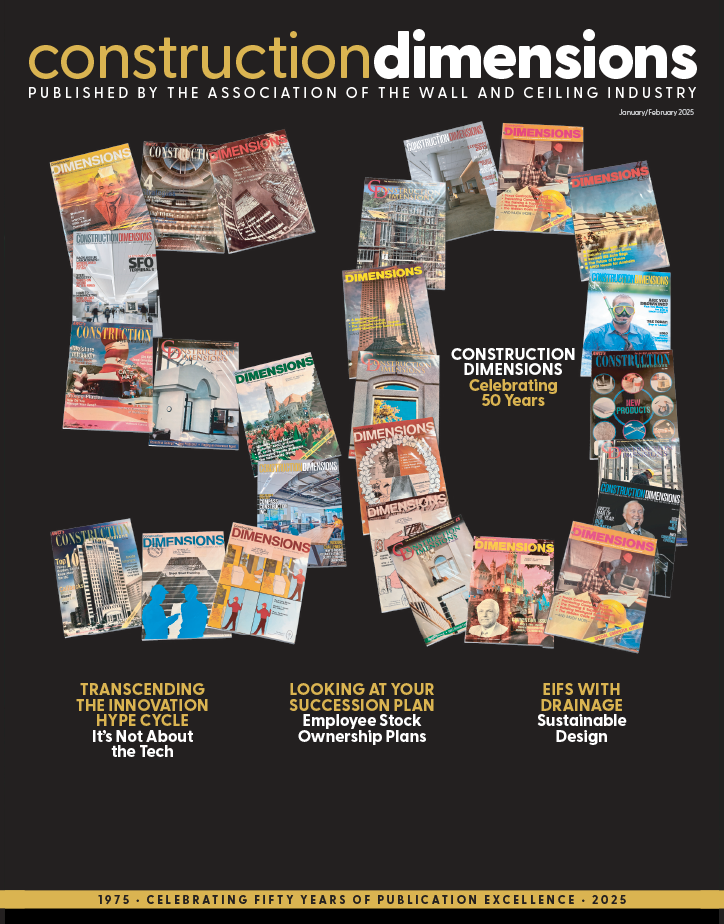Q: What is the difference between a prescriptive-based and a performance-based building code?
A: It is important to understand the main goal of a building code. The preface of the 2021 International Building Code, IBC states that the “code is intended to establish provisions that adequately protect public health, safety and welfare.” Further, the IBC is considered a model code in that it serves as the basis for a local municipality, which may include states, to ensure these goals are maintained at a local level through enforcement by the authority having jurisdiction in that region. The model code is adopted and frequently modified to meet local needs.
The International Energy Conservation Code and the IBC are maintained and updated using a process administered by the International Code Council. The IECC establishes minimum requirements for energy-
efficient buildings using prescriptive- and performance-related provisions. IBC is similar in that regard because it also has both types of provisions. Both codes are written in a manner that is enforceable by the local AHJ, and both can be seen to have two means (performance or prescriptive) to achieve the intended goals: energy efficiency or structurally safe.
A prescriptive-based code uses current and accepted building materials, and requires established techniques to achieve the goal. An example is the prescriptive language found in the IBC that specifically defines how to construct a two-hour-rated fire wall using gypsum panels. An example for energy compliance then becomes a cold-formed steel framed wall. To be compliant, the wall will have a specific amount of insulation in the stud cavity combined with a specific amount of continuous insulation installed over the framing. This is deemed compliant to the intent.
A performance-based code focuses on the intent and allows the designer, building product manufacturer or contractor to employ the best design, assembly or method to achieve that intent. That would translate in the above fire wall example to a wall that would provide a two-hour fire-resistance rating when tested in accordance with ASTM E119. The fire wall must be structurally sound to remain standing if the structure on one side of the wall should collapse during a fire. The wall must also be noncombustible. This allows the design professional to use a system that best meets the needs of the project. It also provides for innovation by the product manufacturer to utilize new material science advances to develop a new system. It also gives the contractor some leeway to value engineer the project.
The IECC has a performance-based option as well. In this example the designer is initially given an energy budget based on the proposed structure being designed using the prescriptive method. Using computer modeling, the designer generates a final design that meets budget but complies with the code by taking into account the energy demands of the entire building, not its component parts. Within the prescriptive method there are several options. The first is based on the thermal performance of individual building component parts of the structure. These component parts include roofs, walls and slabs. This option mandates the required insulation, by R-value in these elements. The second option allows for analysis of the entire component part using a U-factor, while the third looks at the entire building.
To this point, model codes tend to be a blend of both prescriptive- and performance-based provisions. But one code is entirely performance based: the ICC Performance Code for Buildings and Facilities. The code itself was first launched in the late 1990s, but it has not been widely accepted in the United States; the ICC is planning to refresh and update this code in the near future.
Contractors should be aware of the differences in these two types of provisions. Without getting into means and methods, the prescriptive provisions dictate the requirements that lead to compliance. In a performance-based environment, two very important features for the contractor are understanding the intent of the performance-based code, and how it will be interpreted locally. Stepping back to the original example of a fire wall, the industry has become very familiar and comfortable with performance-based provision.
It is generally understood what constitutes a one- or two-hour fire-resistant assembly. The challenge is understanding the differences among a fire partition, a fire barrier and a fire wall. The contractor must be cognizant of continuity, which relies on interpreting the intent.
The performance-based option allows the contractor to take a greater role in the design. Becoming part of the design team in a performance-based environment is possible. In that role there exists the opportunity, along with incurred risk, for the contractor to introduce alternative solutions. Those solutions should meet the intent of the code, and offer benefits in design and construction.
Robert Grupe is AWCI’s director of technical services. Send your questions to [email protected], or call him directly at (703) 538.1611.




